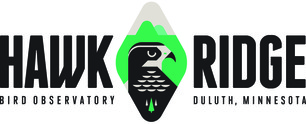
Dear Hawk Ridge Friends,
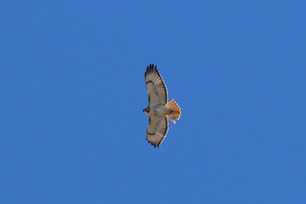
We hope you're enjoying the start to summer! Summer always feels short, as we jump from the end of our spring migration to the start of our fall migration season within just 2.5 months. Thanks to all who visited and enjoyed the spring migration with us at the West Skyline Count! We appreciate the research and education efforts of our staff and volunteers and for your support to help make it possible. You can read the full spring count report below. We invite you to join us for the fall migration at Hawk Ridge Nature Reserve August 15-November 30th. Registration is now open for our annual Hawk Weekend Festival Event Sept. 20th-22nd and for the HMANA 50th Anniversary Conference here in Duluth Nov. 7-10th! Find out more info below!
P.S. If you missed our last e-newsletter, you can view that and older versions by clicking HERE.
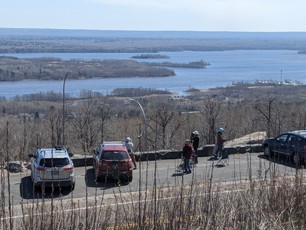
Hawk Ridge Bird Observatory conducted the West Skyline Hawk Count (WSHC) from March 1 - May 31, 2023. This was the seventh consecutive year of the spring count, and the 16th complete count season. The westernmost spring hawk watch on the Great Lakes is made possible thanks to a generous donation. Goals of this project include observing, recording and documenting raptor and non-raptor migrants on shores of Lake Superior in Duluth, MN. The WSHC recorded 605.68 hours, the second highest in the history of the spring count. There were several large weather systems that shortened or canceled the count throughout the season. Zero raptors were counted on 10 individual days. The total raptor count in 2024 reached 26,776 and included 16 raptor species. March tallied 3,085, April 13,338, and May 10,353 respectively. 99 species of non-raptors were counted as migrants as well, totaling 28,527 individual birds. For complete raptor and non-raptor data from 2024, check out Trektellen.
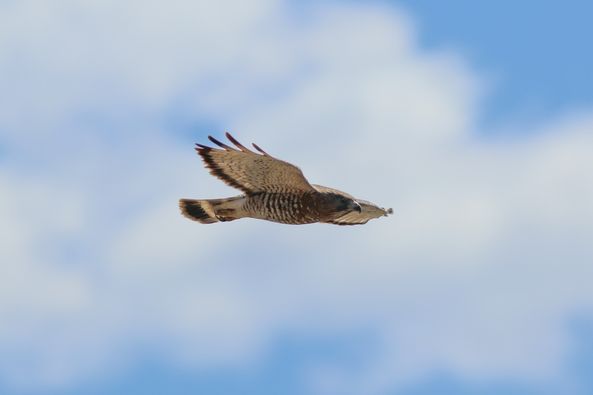
Spring weather in Duluth is typically slow to arrive, with snow and ice lingering into April or beyond. A mild winter with minimal snowfall left Enger Tower and Thompson Hill snowless for the first three weeks of March. Additionally, ice cover on the lake was less than 1% on March 1. These mild temperatures persisted until March 24, when a four day snow storm dropped 24-30 inches across the Northland. April temperatures averaged only 1.3 degrees Fahrenheit above the long term average, and produced fairly average raptor flights. The end of the month developed a string of consecutive days with light NE winds associated with southern warm front passage. These conditions can be ideal for Broad-winged Hawk flights; birds are pushed northward by southerly winds, but cool air off the lake eliminates major thermal development and keeps the flight low.
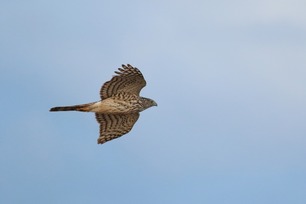
Early May produced one more significant low pressure warm front that rounded out an excellent flight of Sharp-shinned Hawk and falcons. However, late May became highly variable, with some warm, sunny days reaching 75-80F, and some blustery cold days with a biting lake breeze. When winds off the lake reach 25+ mph, wind chills can easily be in the low 30s in May. One cold frontal passage on May 11 dumped wildfire smoke from British Columbia into the Duluth area, greatly reducing visibility and motivation for a raptor flight on May 12. All weather data from the National Weather Service at weather.gov.
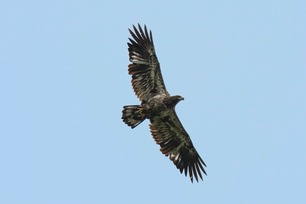
The 2024 raptor count totals finished above the long term average; Bald Eagles (5833) and Broad-winged Hawk (11706) combined for over half of all raptors counted. Two species set seasonal high counts this year. Turkey Vultures (3938) were a constant presence along the ridge, and the highest individual count occurred on April 11 (562). The record high count was also set for Peregrine Falcon (34). Local Peregrines can be seen daily below Enger Tower, hunting pigeons in the harbor, but most migrant Peregrines passed by in late April and early May on their way to Arctic nesting grounds. The only notable low count was a single American Goshawk.
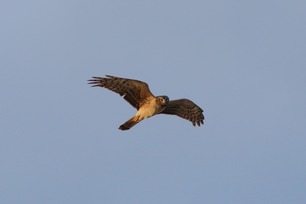
In addition to the two high counts, 8 species were recorded in above average numbers: Bald Eagle, Northern Harrier, Sharp-shinned Hawk, Broad-winged Hawk, Swainson’s Hawk, Golden Eagle, American Kestrel and Merlin. The largest Bald Eagle flight occurred on March 31 (407). There is a typical second pulse of Balds in late April and May when southern eagles arrive post-nesting in the deep south, notably 277 on May 5. Northern Harrier can be a cryptic species to hawk watch for. Many Harriers lack the fear of water other raptors possess, and some may simply cross the lake or stick extremely close to the shoreline. Being powered migrants, Harriers may not wait for thermals to develop like soaring species, and move immediately at first light and throughout the day.
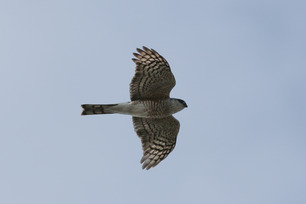 The best Sharp-shinned Hawk flight occurred on May 5 (358), at the Thompson Hill site. Another powered migrant, these petite accipiters often stick low to the shore, but a light breeze from the northeast can push them up just enough for prime viewing at the hawk watch. There is a similar effect from a lake breeze on Broad-winged Hawks, although these thermal dependent buteos can also build to impressive numbers on southwest winds. The Broad-winged total of 11706 is just above the long term average of 10583, but is significantly higher than counts from the previous four years. Swainson’s Hawks are an unusual migrant, and the count typically records 2-7. The four Swainson’s this year are just slightly above the long term average. Golden Eagles (117) never arrived in a grand way, with only a high count of 11 on March 14. Historical high counts can soar into the 30-50 range, but these birds were likely affected by lack of snow and returned north early.
The best Sharp-shinned Hawk flight occurred on May 5 (358), at the Thompson Hill site. Another powered migrant, these petite accipiters often stick low to the shore, but a light breeze from the northeast can push them up just enough for prime viewing at the hawk watch. There is a similar effect from a lake breeze on Broad-winged Hawks, although these thermal dependent buteos can also build to impressive numbers on southwest winds. The Broad-winged total of 11706 is just above the long term average of 10583, but is significantly higher than counts from the previous four years. Swainson’s Hawks are an unusual migrant, and the count typically records 2-7. The four Swainson’s this year are just slightly above the long term average. Golden Eagles (117) never arrived in a grand way, with only a high count of 11 on March 14. Historical high counts can soar into the 30-50 range, but these birds were likely affected by lack of snow and returned north early.
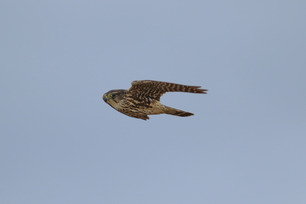
American Kestrels (96) neared 100 for the second year in a row! Merlins (61) rounded out an excellent falcon year, with all three expected falcons remaining above average. Rough-legged Hawk (181) sunk to the lower end of the spectrum this spring. Rough-leggeds are another variable migrant that can wander long distances in response to weather, although it is hard to say how a warmer late winter affected these birds.
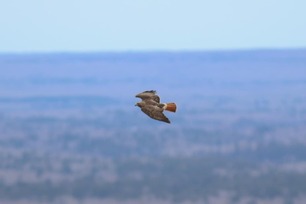
Red-tailed Hawks (2276) appear to be remaining on the low end for now. The average count from 2005-2024 is 2732, but from 2000-2004 the average was 6438. This change is something to watch, as fall counts of Red-tailed Hawk have also declined in the last 30 years (HMANA Raptor Population Index). Osprey (119) also continue to be seen in lower than average numbers. Cooper’s Hawk (33) and Red-shouldered Hawk (3) are not usually seen in high numbers, and these counts are slightly lower than historical totals.
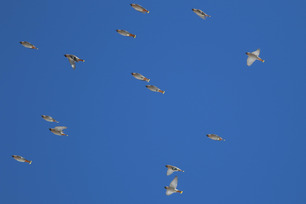
The spring count sees small numbers of diurnally migrating non-raptors. Highlight species are a small variety of ducks, Sandhill Cranes, Northern Flickers, Blue Jays, Bohemian Waxwings, American Robins and finches. The most numerous non-raptor was Bohemian Waxwings, with an astounding 8040 birds! The earliest ever Sandhill Crane was seen on March 6, an obvious indicator of a warm winter. Other highlights included a Red-headed Woodpecker, several Olive-sided Flycatcher and 3 Townsend’s Solitaires! Resident birds have now returned to the count sites, including Clay-colored Sparrows and Chestnut-sided Warblers, and a Connecticut Warbler briefly sang below Enger Tower on its way to the boreal forest.
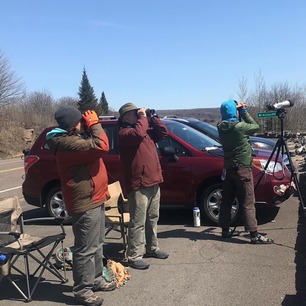
Thank you to the countless visitors and hawk watchers who appreciate the spectacle of migration in Duluth. The support from the community in Duluth certainly makes this count a special place. Thanks to all for your good spotting, great conversation, fresh pastries and company this season! The WSHC could not exist without the support of Frank Nicoletti, serving as a relief counter and offering his wisdom on the beauty of watching hawks. I’d like to extend my sincere gratitude to Ralph Larsen, John Edwards, Ed Longhway, Jim Harkness, David Carman, Steve Kolbe, Neil Gilbert, Jan and Larry Kraemer and Kate Nicoletti. Your commitment and love of birds inspires me every day! I am also grateful for the help and support of Education staff Sara DePew, Margie Menzies and Peter Mundale, helping to share the world of birds with others.
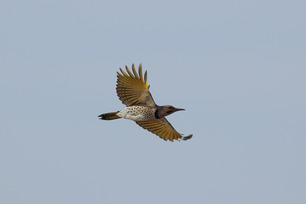
What a wonderful season it was, and as the summer dog days drag by, we will all be counting down the days for migration to begin again! Fall counts begin at Hawk Ridge on August 15th, and we hope to see you there. Click HERE for full season count and click HERE for the daily and monthly raptor counts via HawkCount. Thanks and hope to see you at the watch this fall!
Sean McLaughlin
Spring Counter
2024 Summer MAPS Banding Update
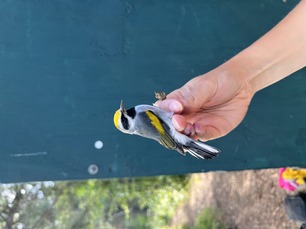
Hawk Ridge is well underway with 3 out of 7 scheduled summer MAPS sampling sessions already completed. MAPS stands for Monitoring Avian Productivity and Survivorship and is a study that looks at breeding birds (predominantly songbirds) and follows the return of birds to nest at Hawk Ridge, and gauges how successful their breeding season was by the number of young birds we capture after they fledge from the nest. Each year the nets are set in the same locations for at least 7 sessions during the same timeframe each year- between May 31 and August 8. This is a collaborative project managed by the Institute for Bird Populations and historically has had as many as 1200 collaborating stations monitoring the breeding bird populations all over the US and Canada.
So far this season, we have logged 161 birds - 77 new birds, 5 unbanded Ruby-throated Hummingbirds (these require a special permit and additional training to band), and 84 recaptured birds that were banded previous to this season or banded during the present season. So far, we have caught 22 species of birds during this year’s MAPS banding season. In addition to the banding, we also keep track of all of the different species of birds seen and heard in the area within 100 meters of any of our MAPS route of 10 nets. So far this year, we have documented a total of 40 species of birds, some merely flying over, and some we rarely catch but are still part of the breeding bird population at the Ridge.
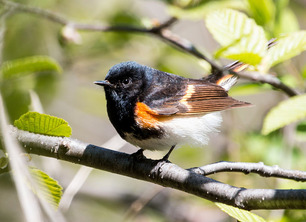
Some of the most interesting stories come from our recaptured birds. For example, during our first MAPS session this year, when we know that we have not banded any birds at Hawk Ridge since the previous fall, we caught 23 birds that had returned from previous years banding- 1 Common Yellowthroat, 2 Chestnut-sided Warblers, 3 Black-Capped Chickadees, 5 Veeries, 4 White-throated Sparrows, 1 Black and White Warbler, 2 American Redstarts, 2 Song Sparrows, 2 Mourning Warblers, and 1 Red-eyed Vireo. Each of these birds has a story and many of them have faithfully returned for a number of years. Veeries for example migrate all the way to Central and Southern South America each winter.
Since this year is our 10th season doing MAPS banding at Hawk Ridge, we will be taking a good look at what our 10 years of data can tell us about the breeding population of birds at Hawk Ridge. Stay tuned for more information about this interesting and important project!
Margie Menzies
Education Director
UPCOMING EVENTS
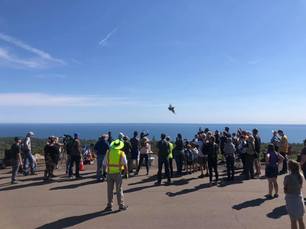 Come and celebrate the amazing fall bird migration with us! Hawk Weekend is the annual festival held by Hawk Ridge Bird Observatory in Duluth, MN. Bird migration research and education programs have been shared with visitors throughout the world each fall at Hawk Ridge Nature Reserve for over 50 years! Join us for a fun weekend with a variety of birding field trips, nature hikes, programs, and activities for all ages! Click HERE for schedule!
Come and celebrate the amazing fall bird migration with us! Hawk Weekend is the annual festival held by Hawk Ridge Bird Observatory in Duluth, MN. Bird migration research and education programs have been shared with visitors throughout the world each fall at Hawk Ridge Nature Reserve for over 50 years! Join us for a fun weekend with a variety of birding field trips, nature hikes, programs, and activities for all ages! Click HERE for schedule! 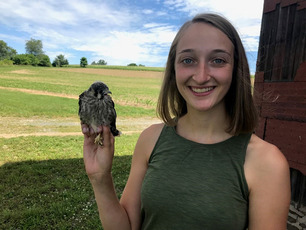
We are happy to announce Mercy Melo from the Pennsylvania Game Commission will be joining us as our keynote speaker. She will present Collaborations in Conservation as part of our festival celebration kick-off event on Friday, September 20th 6-9pm at the Great Lakes Aquarium (online registration required). Migratory raptors don't obey state and international borders, and neither should our studies of them! Research projects that span large geographic areas are key to truly understanding raptor populations and how we can protect them best. In this talk, Mercy will discuss how teamwork makes the dream work in conservation studies using examples from her research investigating the continental population decline of American Kestrels.
Many of our field trips, evening owl programs, workshops have limited space, so be sure to register HERE today! EARLY BIRD DISCOUNT available through August 15th. All registration closes on September 15th.

Hawk Ridge Bird Observatory and Holbrook Travel are off on another fascinating international birding adventure in the fall of 2024. Guatemala is a richly diverse cultural center and a lush and vibrant paradise for birders. Set in the heart of Central America, it sits within one of the Western Hemisphere’s prime migratory corridors. Join Hawk Ridge Bird Observatory’s Margie Menzies and an expert local guide to explore a variety of low and high altitude habitats and see firsthand many of the rare and endemic species that inhabit this biodiverse area. Learn about local conservation efforts, including the Panajachel-based Asociación Vivamos Mejor, which seeks to train nearby residents to become birding and nature guides.
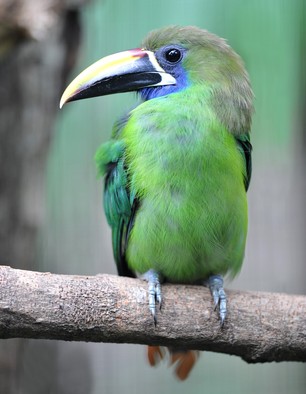
Highlights include birding the lower and upper trails at Los Tarrales, a natural reserve with diverse forest types and a 340-species bird list that includes regional endemics like the Horned Guan, Highland Guan, Azure-rumped Tanager, and Blue-tailed Hummingbird. Explore Santiago Atitlán, a town on a bay of Lake Atitlán known for its many women’s cooperatives, traditional textile weaving, and rich Maya culture. Visit Corazón del Bosque Reserve for a chance to see Mountain Trogon, White-naped Brushfinch, and with luck, the uncommon Pink-headed Warbler. Navigate across Lake Atitlán to visit the archaeological site of San Andrés Semetabaj to look for species like the Inca Dove, Great-tailed Grackle, Bronzed Cowbird, Vaux’s Swift, and more. Meet representatives of Asociación Vivamos Mejor, a private nonprofit organization committed to improving the quality of life in communities surrounding Lake Atitlán.
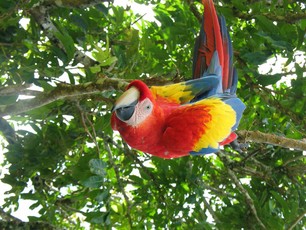
Each day provides a variety of opportunities to make the most of the birding/nature touring available, as well as options for individual exploration and leisure time. You will be traveling with other nature enthusiasts to all share an amazing spectrum of bird experiences and knowledge. All meals are included and dining is often arranged outdoors or in private group seating. Your guides will be Hawk Ridge Education Director, Margie Menzies, and an expert local guide.
Don’t miss this incredible experience! Space on this trip is limited to 10, and final payment for the trip is due July 17, 2024. Click HERE for registration, pricing, itinerary, and more! Questions? Contact Debbie Sturdivant Jordan at 866-748-6146 or debbie@holbrooktravel.com, or Margie Menzies mmenzies@hawkridge.org. Hope to see you in October!
Hawk Migration Association of North America (HMANA)
50th Anniversary Conference in Duluth, MN
November 7-10, 2024
.jpg) Hawk Ridge Bird Observatory is happy to announce that the Hawk Migration Association of North America (HMANA) is holding their 50th anniversary conference here in Duluth, MN in Nov. 2024! Hawk Ridge is helping host this special celebration of HMANA and their important impact and efforts in raptor conservation. The conference will be held at the Holiday Inn & Suites Duluth-Downtown with field trips to Hawk Ridge and other birding hotspots in the area.
Hawk Ridge Bird Observatory is happy to announce that the Hawk Migration Association of North America (HMANA) is holding their 50th anniversary conference here in Duluth, MN in Nov. 2024! Hawk Ridge is helping host this special celebration of HMANA and their important impact and efforts in raptor conservation. The conference will be held at the Holiday Inn & Suites Duluth-Downtown with field trips to Hawk Ridge and other birding hotspots in the area.
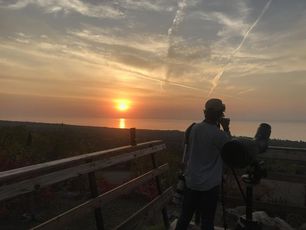
We are calling on all hawk watchers, raptor enthusiasts, raptor biologists, and HMANA friends across the Americas to join us in person or virtually for this momentous conference and anniversary celebration! We have an exciting lineup of speakers, symposiums, and poster session – all focused on honoring the history of hawkwatching in the Americas, current raptor research efforts, new looks at raptor education and discussions on the future of hawkwatching, hawk migration study, and how best to address the challenges we face. We also have a great lineup of field trips, programs, and fall hawkwatching at Hawk Ridge! Click HERE for schedule/ trip/program info. Registration is open now! REGISTER TODAY HERE!
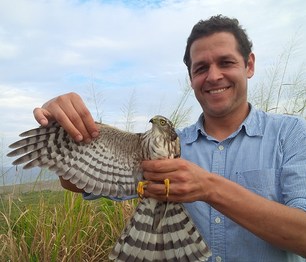
The Keynote speaker for the conference will be Ernesto Ruelas Inzunza. Ernesto is the founder of the Veracruz River of Raptors and helped lead HMANA’s efforts to start the important Raptor Population Index partnership. Currently, he is a Professor-Research Scientist at the Institute of Biotechnology and Applied Ecology of the Universidad Veracruzana in Mexico and editor-in-chief of the Wilson Journal of Ornithology. Ernesto’s talk is titled: Raptor migration in the Neotropics: three decades of discovery where he will detail discoveries in raptor migration in neotropics in recent years and what discoveries or work is on the horizon.
 We are also thrilled to welcome plenary speaker Clay Sutton, who has a long, rich history in the hawkwatching community and well known co-author of Hawks in Flight with co-authors Pete Dunne and David Sibley. Here’s a sneak peak of what’s in store for Clay’s presentation entitled: “Northwest Winds: Shifting Winds—Winds of Change.” Clay will reflect upon his own 50 years of watching hawks, primarily at Cape May, New Jersey, but also at many of the key raptor watches throughout North America and beyond. We have all seen changes in the composition of raptor flights, and changes in the very expectations of what we may see. We have experienced significant shifts in the migration phenology and winter ranges of hawks. But what hasn’t changed is the energy, dedication, and enthusiasm of those who annually staff their posts, climbing to mountain outcrops, urban overlooks, sandy beaches, and lighthouses at land’s end to monitor and celebrate the annual passage of birds of prey.” Clay will conclude that the 21st century may have brought great changes, but that shifting winds will never diminish the need, or our passion, for what we do.”
We are also thrilled to welcome plenary speaker Clay Sutton, who has a long, rich history in the hawkwatching community and well known co-author of Hawks in Flight with co-authors Pete Dunne and David Sibley. Here’s a sneak peak of what’s in store for Clay’s presentation entitled: “Northwest Winds: Shifting Winds—Winds of Change.” Clay will reflect upon his own 50 years of watching hawks, primarily at Cape May, New Jersey, but also at many of the key raptor watches throughout North America and beyond. We have all seen changes in the composition of raptor flights, and changes in the very expectations of what we may see. We have experienced significant shifts in the migration phenology and winter ranges of hawks. But what hasn’t changed is the energy, dedication, and enthusiasm of those who annually staff their posts, climbing to mountain outcrops, urban overlooks, sandy beaches, and lighthouses at land’s end to monitor and celebrate the annual passage of birds of prey.” Clay will conclude that the 21st century may have brought great changes, but that shifting winds will never diminish the need, or our passion, for what we do.”
We hope to see you at this memorable event! Registration is open now! REGISTER TODAY HERE!
Everyone Can Bird: Accessible Birding Series
Upcoming: August 14th & October 12th, 2024
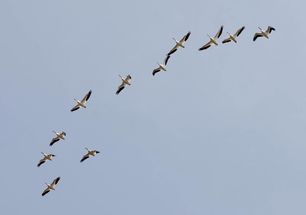
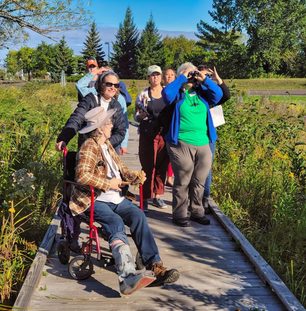
Thank You for Your Support!
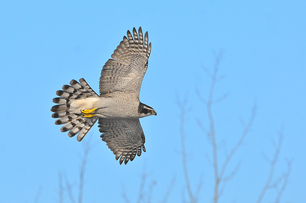 Hawk Ridge Bird Observatory thanks all of our supporters. We appreciate you! As a nonprofit organization, we are primarily funded by individual gifts to put our bird migration research and education programs in action. Below are some of the ways you can help us keep sharing the magic of the bird migration!
Hawk Ridge Bird Observatory thanks all of our supporters. We appreciate you! As a nonprofit organization, we are primarily funded by individual gifts to put our bird migration research and education programs in action. Below are some of the ways you can help us keep sharing the magic of the bird migration!
Support Hawk Ridge by Shopping!
 Thank you for the wonderful support by shopping at our gift shop last fall. If there was an item you were hoping for, please check out our online shopping options below with some of our merchandise or contact jlong@hawkridge.org.
Thank you for the wonderful support by shopping at our gift shop last fall. If there was an item you were hoping for, please check out our online shopping options below with some of our merchandise or contact jlong@hawkridge.org.
Big Frog (direct ship or pick up at Duluth store)
The Mug Experience (direct ship)
Become A Member Today!
If you're already a member of Hawk Ridge, we sincerely appreciate your support! THANK YOU! If you're not a member and have enjoyed your experience with Hawk Ridge, we invite you to renew or join as a Hawk Ridge member today! Our memberships and donations help drive our bird conservation research and education programs. You can check out our exciting membership benefits and join or renew online HERE!
Simply Donate
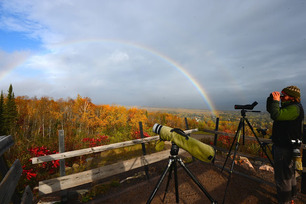 You can always simply donate online by clicking HERE or by mailing a check made out to Hawk Ridge Bird Observatory, P.O. Box 3006, Duluth, MN 55803.
You can always simply donate online by clicking HERE or by mailing a check made out to Hawk Ridge Bird Observatory, P.O. Box 3006, Duluth, MN 55803.
Thank you again for your wonderful gift of support! Hope to connect with you again soon!
Sincerely,
Janelle Long
Executive Director
Hawk Ridge Bird Observatory
Hawk Ridge Bird Observatory
P.O. Box 3006
Duluth, MN 55803-3006
Call: 218-428-6209
Contact: mail@hawkridge.org
Visit: www.hawkridge.org
501(c)3 Non-Profit Organization
Federal Tax ID 76-0746366
